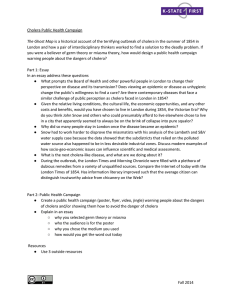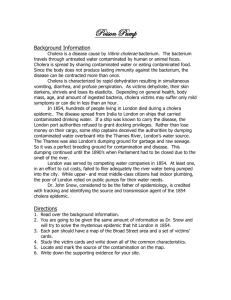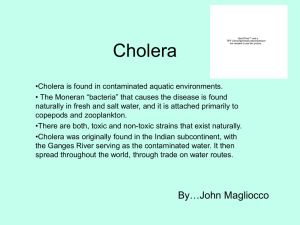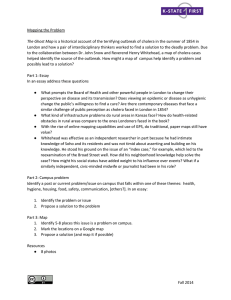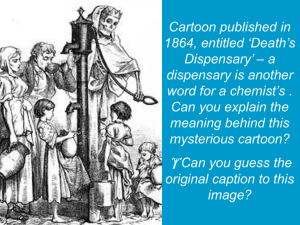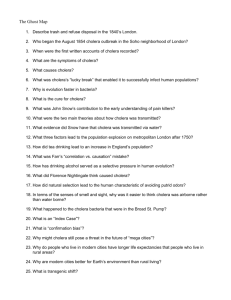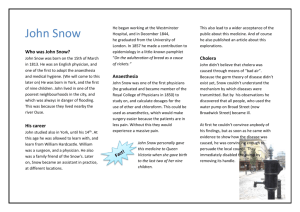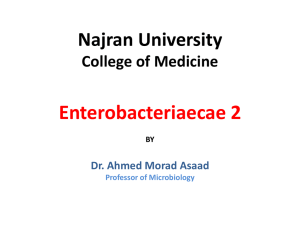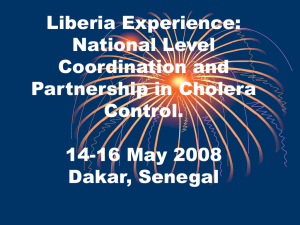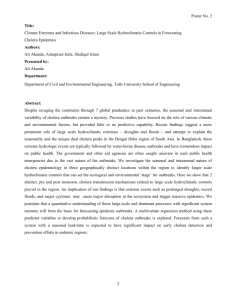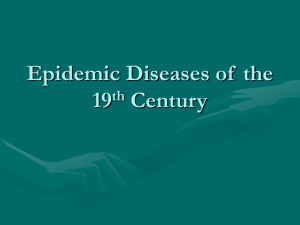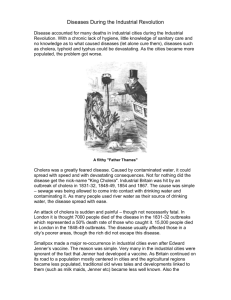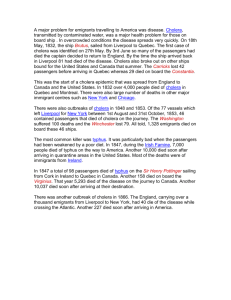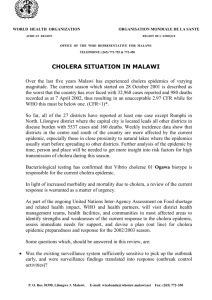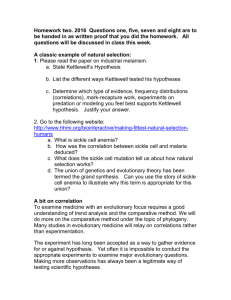Poison Pump Background Information
advertisement
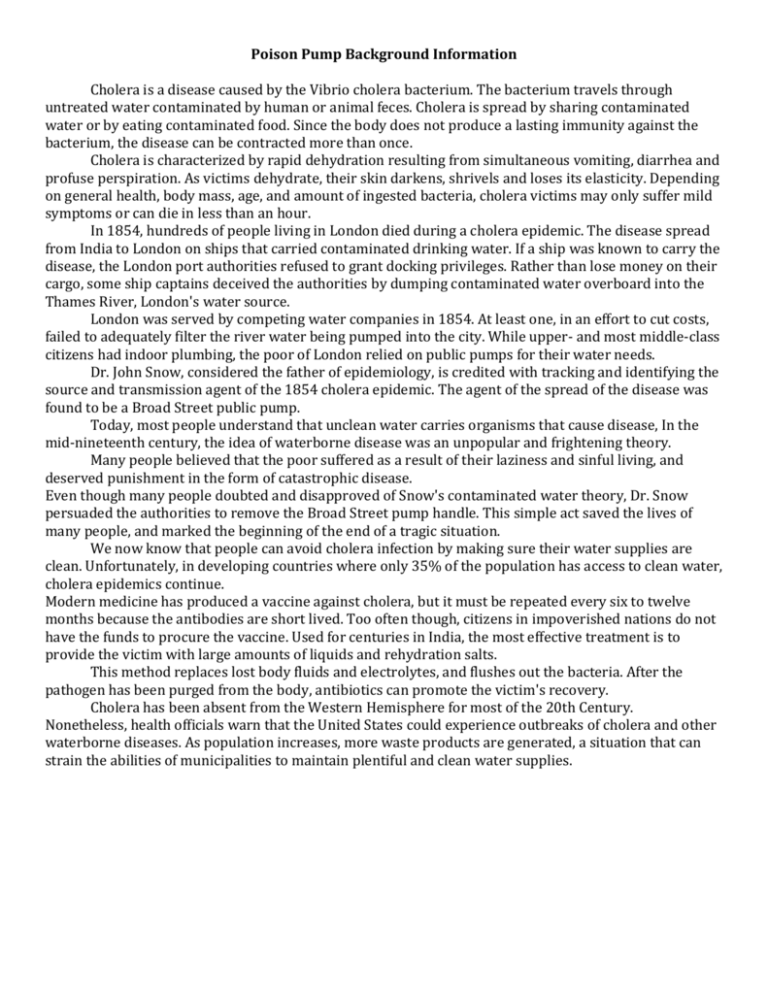
Poison Pump Background Information Cholera is a disease caused by the Vibrio cholera bacterium. The bacterium travels through untreated water contaminated by human or animal feces. Cholera is spread by sharing contaminated water or by eating contaminated food. Since the body does not produce a lasting immunity against the bacterium, the disease can be contracted more than once. Cholera is characterized by rapid dehydration resulting from simultaneous vomiting, diarrhea and profuse perspiration. As victims dehydrate, their skin darkens, shrivels and loses its elasticity. Depending on general health, body mass, age, and amount of ingested bacteria, cholera victims may only suffer mild symptoms or can die in less than an hour. In 1854, hundreds of people living in London died during a cholera epidemic. The disease spread from India to London on ships that carried contaminated drinking water. If a ship was known to carry the disease, the London port authorities refused to grant docking privileges. Rather than lose money on their cargo, some ship captains deceived the authorities by dumping contaminated water overboard into the Thames River, London's water source. London was served by competing water companies in 1854. At least one, in an effort to cut costs, failed to adequately filter the river water being pumped into the city. While upper- and most middle-class citizens had indoor plumbing, the poor of London relied on public pumps for their water needs. Dr. John Snow, considered the father of epidemiology, is credited with tracking and identifying the source and transmission agent of the 1854 cholera epidemic. The agent of the spread of the disease was found to be a Broad Street public pump. Today, most people understand that unclean water carries organisms that cause disease, In the mid-nineteenth century, the idea of waterborne disease was an unpopular and frightening theory. Many people believed that the poor suffered as a result of their laziness and sinful living, and deserved punishment in the form of catastrophic disease. Even though many people doubted and disapproved of Snow's contaminated water theory, Dr. Snow persuaded the authorities to remove the Broad Street pump handle. This simple act saved the lives of many people, and marked the beginning of the end of a tragic situation. We now know that people can avoid cholera infection by making sure their water supplies are clean. Unfortunately, in developing countries where only 35% of the population has access to clean water, cholera epidemics continue. Modern medicine has produced a vaccine against cholera, but it must be repeated every six to twelve months because the antibodies are short lived. Too often though, citizens in impoverished nations do not have the funds to procure the vaccine. Used for centuries in India, the most effective treatment is to provide the victim with large amounts of liquids and rehydration salts. This method replaces lost body fluids and electrolytes, and flushes out the bacteria. After the pathogen has been purged from the body, antibiotics can promote the victim's recovery. Cholera has been absent from the Western Hemisphere for most of the 20th Century. Nonetheless, health officials warn that the United States could experience outbreaks of cholera and other waterborne diseases. As population increases, more waste products are generated, a situation that can strain the abilities of municipalities to maintain plentiful and clean water supplies.

